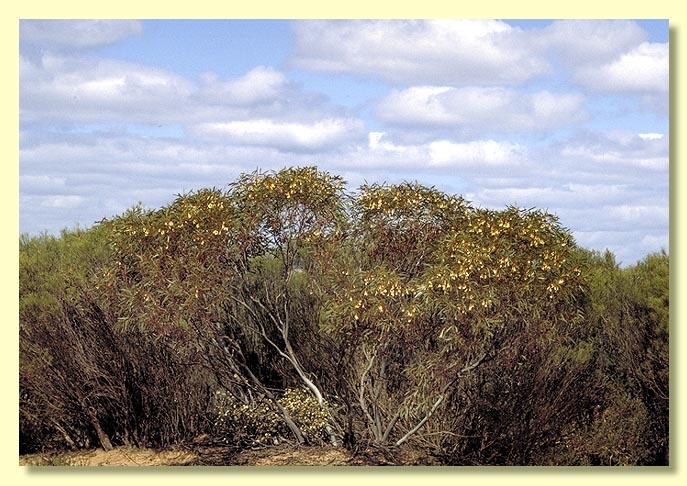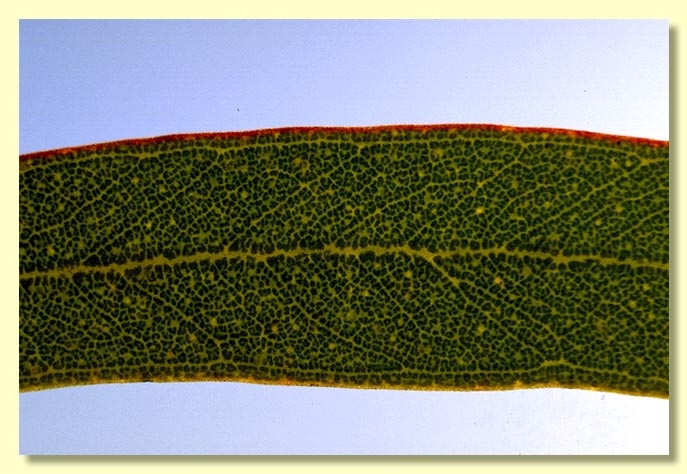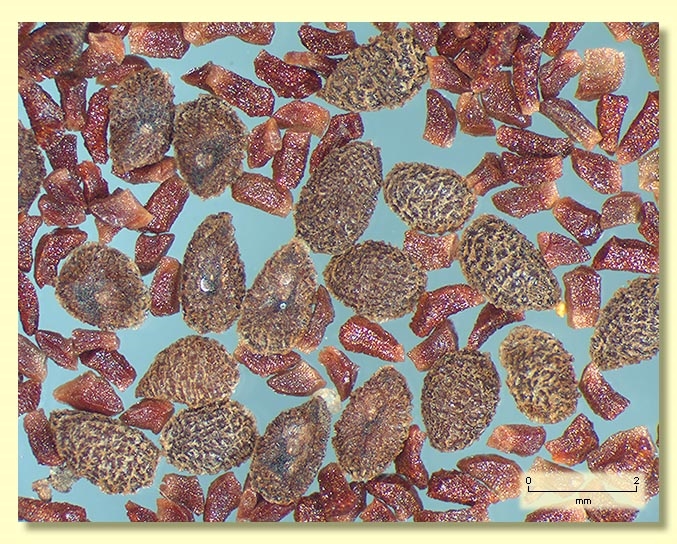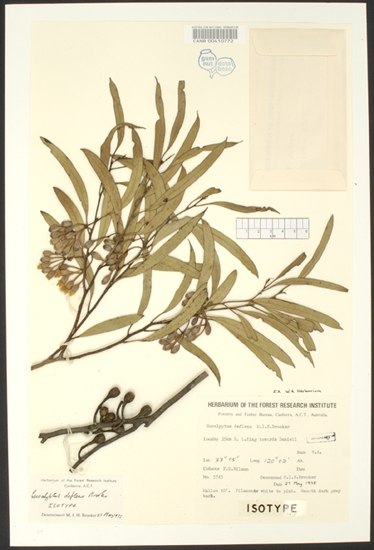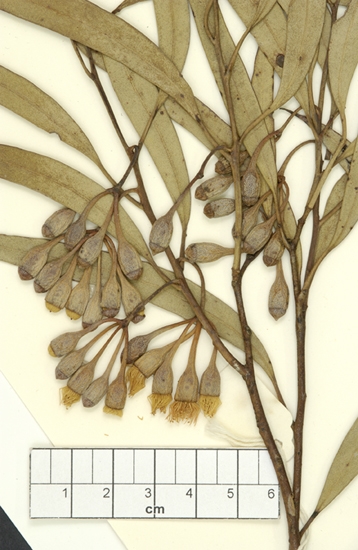Eucalyptus | Symphyomyrtus | Dumaria | Deflexae
Euclid - Online edition
Eucalyptus deflexa
Bark smooth throughout, dark or pale grey to whitish.
Branchlets with oil glands in the pith.
Juvenile growth (coppice or field seedlings to 50 cm): not seen.
Adult leaves thick, erect, alternate, petioles 0.5–1.2 cm long; blade linear to narrowly falcate or narrowly elliptical, 5–7.5(9) cm long, 0.5–0.9(1.1) cm wide, base tapering to petiole, margin entire, apex pointed, concolorous, glossy, yellowish green, side-veins at an acute or wider angle to midrib, reticulation moderate to dense, intramarginal vein close to margin, oil glands scattered, intersectional.
Inflorescence axillary unbranched, pendulous, peduncles 1–3 cm long, buds (3)7 per umbel, pedicels 0.6–1.8 cm long. Mature buds cylindrical (0.8–1.2 cm long, 0.4–0.5 cm wide), white (not waxy), scar present, operculum shallowly and obtusely conical to rounded or flattened (0.2–0.25 cm long), stamens inflexed with the outer filaments longer than the inner, anthers oblong to wedge-shaped, versatile, sub-dorsifixed, dehiscing by longitudinal slits, style long and straight, stigma blunt or slightly rounded, locules (3)4, the placentae each with 4 vertical rows of ovules. Flowers cream with basal pinkish flush.
Fruit pendulous, pedicellate (pedicels 0.9–2 cm long), barrel-shaped, 0.9–1.2 cm long, 0.7–0.9 cm wide, disc descending vertically, valves (3)4, deeply enclosed.
Seeds ornamentation whitish to translucent over brown background, 1.5–2.5 mm long, ovoid or flattened-ovoid, dorsal surface pitted below the ornamentation, hilum ventral.
Cultivated seedlings (measured at ca node 10): cotyledons reniform; stems rounded in cross-section; leaves always petiolate, opposite for 4 or 5 nodes then alternate, lanceolate becoming linear, 4–8 cm long, 0.6–1.2 cm wide, dull, greyish green becoming glossy higher up stem.
Flowering has been recorded in May, August, September, October and November.
A small, low mallee endemic to Western Australia and of restricted distribution, from east of Lake King north-east towards Mt Day and to north-east of Ravensthorpe. It is found on sandy soil. The bark is smooth and the adult leaves narrow, slightly glossy green.
Eucalyptus deflexa belongs in Eucalyptus subgenus Symphyomyrtus section Dumaria because the buds have two opercula, stamens are strongly inflexed, ovules are in 4 rows on the placentae and cotyledons are reniform. Within section Dumaria it is not closely related to any species and occupies a monotypic series (series Deflexae).
The inflorescences are notably pendulous and the buds conspicuously creamy white, while the flowers (stamens) are pink or creamy white. The seeds which are prominently pitted on the dorsal side with raised whitish borders to the pits are like those of E. merrickiae and E. surgens but there are no other obvious similarities between the two species.

